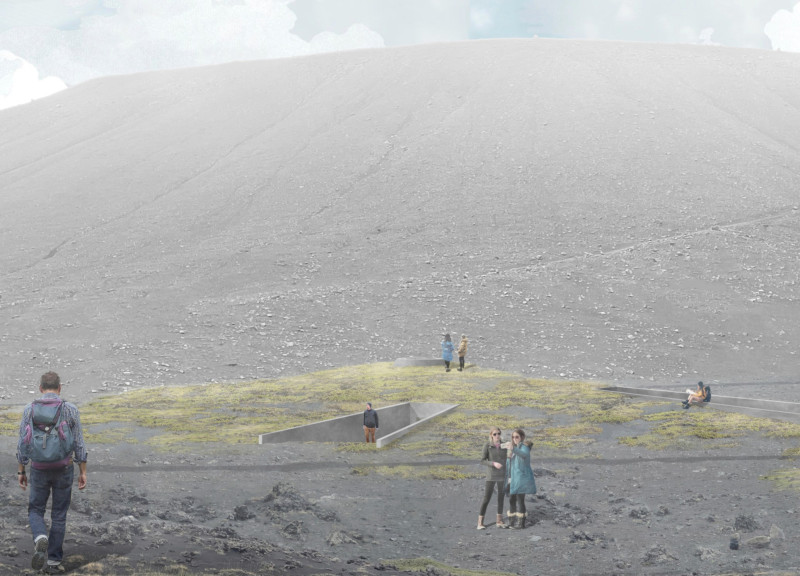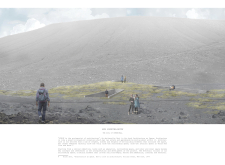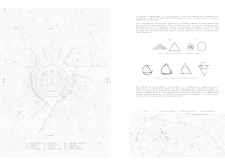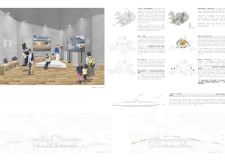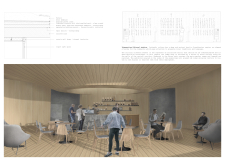5 key facts about this project
The structure features a thoughtful arrangement of interconnected spaces optimized for their intended uses. The main entrance welcomes visitors and leads into exhibition areas showcasing Iceland's natural history. A dedicated cafeteria provides a social setting for guests, while technical rooms ensure efficient building operations. Outdoor pathways promote engagement with the landscape, allowing visitors to explore the natural surroundings fully.
Unique Design Approaches
What distinguishes "Sál Eldfjallisins" from other architectural projects is its integration of the local landscape into its design. The use of solid and void in architectural composition creates a fluid transition between the building and its environment. This approach amplifies the immersive experience for visitors, emphasizing the connection between structure and nature.
The material palette of the project is another key feature. Reinforced concrete provides structural integrity and durability, while wood introduces warmth to the interior spaces. The implementation of triple-layer glass enhances thermal efficiency and allows for ample natural light, enriching the visitor experience. Moreover, water-repellent membranes safeguard the building from Iceland's challenging weather conditions.
Sustainability is another significant aspect of this project. Geothermal systems are integrated to provide heating, showcasing a commitment to minimizing environmental impact. The design optimizes natural light throughout the facility, contributing to energy efficiency while reducing reliance on electrical lighting.
Engagement with Architectural Ideas
To fully appreciate the complexity of "Sál Eldfjallisins," interested readers are encouraged to examine the architectural plans, architectural sections, and detailed architectural designs. These elements reveal the intricate strategies employed in the project, offering insight into how the design concept manifests in practical applications. Additionally, exploring the architectural ideas behind "Sál Eldfjallisins" will enhance understanding of its unique contributions to contemporary architectural discourse.


